Curry leaves are the best ingredient in any Curry we make in the kitchen. It has many medical properties; growing the Curry leaf plant is not difficult. Curry leaves have the most pungent taste and fragrance when fresh. Growing Curry leaves from seeds is a way of propagating a plant of Curry leaves, including selection, preparation, germination, proper soil, water, fertilizing, and winter dormancy.
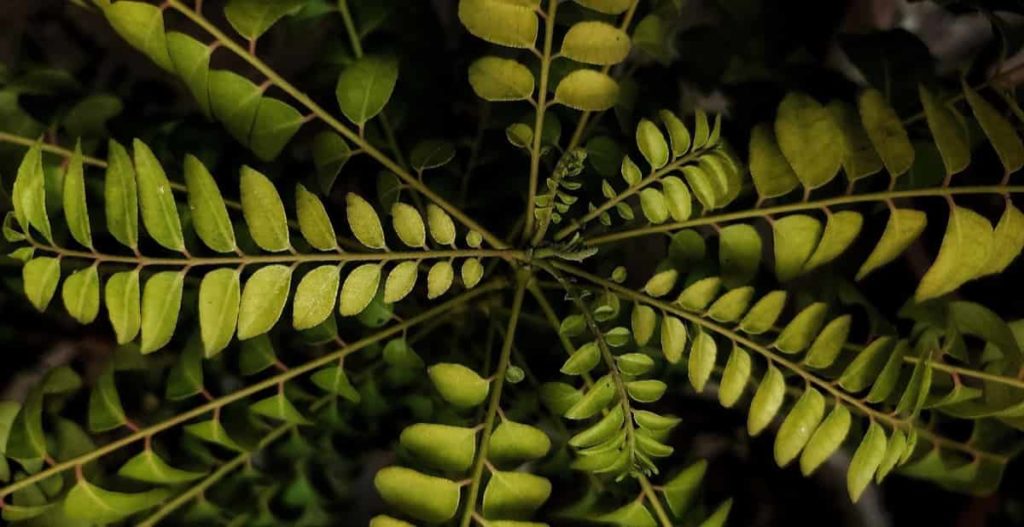
If you take care of all this, there are more chances that your seed will germinate and grow as a plant. Growing a Curry leaf tree from seed requires little effort but patience and preparation. Growing Curry from seed is infinitely more challenging, much like growing avocados because seeds need to be constantly moist and at constant temperatures of about 20°C for success. Let’s check out how to grow curry leaves from seeds at home below.
How to grow curry leaves from seeds at home
Seed selection for growing Curry leaves
You can select the seed from among three varieties of Curry leaf plants. First is the regular, which is the tallest. The second is a dwarf variety best suited for container gardening but less aromatic. The third type is called Gamthi, the most aromatic and pungent of all three varieties. Curry leaf trees produce fragrant white flowers in warm months that eventually ripen into shiny blackberries. Each berry contains a large green seed that you must remove from the husk before planting.
Finding Curry leaf seeds for sale are rare as seeds do not store well. However, some special nurseries sell berries as a seed source for gardeners. You can collect berries directly from the Curry leaf tree. Just wait until the seeds are entirely black before picking them. Ripen seeds are black, and if you choose them, there will be more chances of growing than raw seeds, which are usually dark and green in color. It is better to choose newly harvested seeds than old or green seeds to get a higher yield of Curry leaves or better growing.
Climate conditions required for growing Curry leaves from seed
These plants work best in partial shade locations in full sun when planted outdoors. They like a south-facing window that provides at least eight hours of light a day inside the house. Although they love the sun, you keep plants away from direct sunlight on the hottest, harshest summer days. While the plant is in a growing phase, avoid exposing it to the harsh afternoon sun for long.
Once established, you don’t have to worry much about it. This plant should never face temperatures below 4°C. Young plants under one year of age should not be exposed to the full sun in extremely hot areas. If the temperature rises to 38°C, place them in a partially shady place.
In case you missed it: Best Fertilizer for Curry Leaves: Homemade, Organic, Compost Manure, and NPK
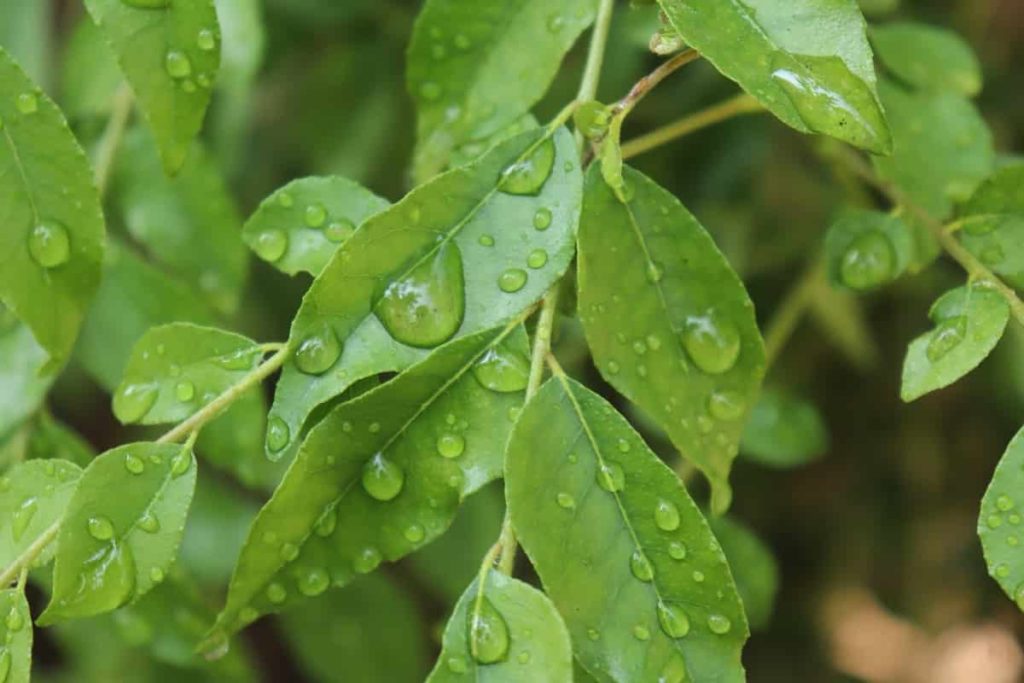
Water requirement for growing Curry leaves from seed
Curry leaf plants are susceptible to root rot, so you must be careful while watering your plants. Curry leaf plants need water only once a week; watering is more frequent during the hottest part of summer. The water has to be thoroughly dried before it is re-watered. The water supply should be low as the plant becomes dormant in the winter season. If there is more water on the Curry leaf plant, it can die. Watering the plant once a week in spring is more substantial.
Soil requirement for growing Curry leaves from seed
The Curry leaf plant is not fussy and will thrive in any soil when it comes to soil needs. Plant it well to drain and make a fertile medium for tremendous growth. Plants need loose, rich, well-draining soil. The Curry leaf plant requires slightly acidic with a pH of 5.6 to 6.0. If your soil has poor drainage, amend the sand to improve it. When planting you can add well-rotted manure or compost to the soil to give the bush growth, it is a good start in its preferred conditions if you have poor soil.
Check your soil before planting to determine if you need to add any modifications, and then re-examine in the middle of the growing season. The aim is to give plants enough nutrients, especially nitrogen, to encourage leaf growth. The Curry leaf plant requires well-drained soil to grow. Lack of proper drainage leads to rot of roots which eventually leads to the death of the plant. You can mix 50% typical garden soil with 25% perlite and 25% compost for the best potting soil.
Germination process of Curry leaf plant seed
Select Curry leaf plant seeds that are smooth and shiny with no signs of damage.
Method 1 – Before sowing the seeds in the soil, you should place them in a wet paper towel, promoting growth. First, squeeze the seeds from the outer flesh. There is no need to remove a transparent film covering the seed; it does not matter how it germinates/rooting. Keep the paper towel moist by checking from time to time, and keep the seeds above 25°C in temperature. The seed may get damaged due to more moistness than repeated watering to wet the paper towel.
In case you missed it: Curry Leaves Gardening For Beginners, How to Start

Method 2 – Another way to grow Curry leaf seeds is to soak them in water for 24 hours to start. You should put seeds in a bowl of hot water for 24 to 48 hours, as you will begin to see them softening. If needed, you can change the water because purple will take over. Then sow the seed into the soil in the pot.
Drying the seeds of Curry leaves overnight before planting them the following day. Spread the Curry leaf plant seeds on a paper plate or cotton dish towel and dry them overnight. Once you do this, dig a hole 1/2 inches, keep the seed and cover the seed lightly with the soil. You don’t want to cover the Curry leaf seed with too much soil, or it will take longer to sprout. It is better to keep the seed vertical. As if the seed was standing. Supportive temperatures for rapid growth and increased dispersion rates.
The curry leaf plant seeds will take about 10 to 15 days to germinate. Note that if the temperature is low, it may take more time for the root to take off. The Curry leaf seed can be grown at an average temperature of 23°C. If the temperature is not around 23°C, it can be folded with the help of polyethylene. An alternative method is to keep it in a greenhouse so it can provide warm temperatures for the Curry leaf seed to grow. Fresh seeds will grow quickly in a few days, while old or dry seeds cannot grow or take too long.
Transplant or repot the Curry leaf plant
Early spring is the best time to transplant the Curry leaf plant to a new container. If, for some reason, a mid-year transplant is required, be sure to do so during a cloudy day in the morning hours. The Curry leaf plant dislikes its roots for being too worried. In addition, every time the Curry leaf plant is transplanted, it will go through a shock period, when it stops growing for a while. Therefore, it is better to transplant the Curry leaf plant only if needed. A baby Curry leaf plant moves from the initial pot to a large container.
In case you missed it: Curry Leaf Growing Tips, Ideas, and Secrets
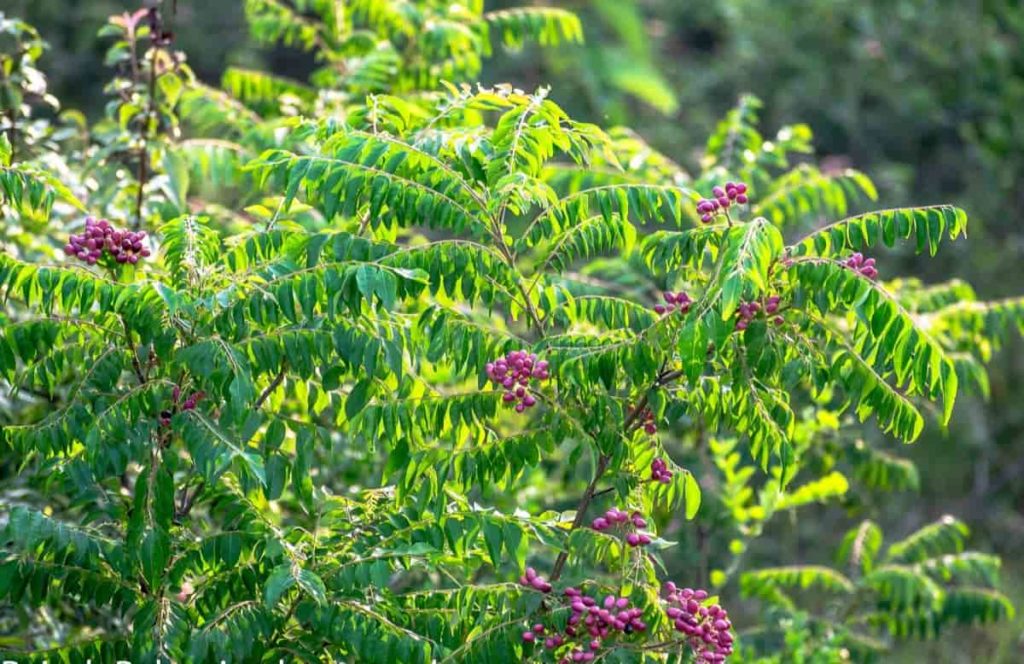
A large container is required when you see the roots coming out of the container drainage hole. One plant per container is enough. Small Curry leaf plants don’t require large containers, but over time you will need to upgrade the plant pot to accommodate its growing root system. Old, large plants should be kept in 30 gallons of soil containers.
Fertilizer requirement for growing Curry leaves from seed
Curry leaf plant is grown for its green leaves, nitrogen-rich fertilizers are perfect for its growth as nitrogen encourages leaf growth. You can use weekly thin seaweed fertilizer as fertilizer weekly once. In addition, homemade fertilizers like diluted curd or buttermilk can be used as fertilizers to grow the seed properly. Buttermilk contains a high amount of nitrogen which acts as an essential role in the growth of the Curry leaf plant.
If fertilizer is used more often, it can burn the roots of a young plant. Epsom salt can also be used by mixing it with a liter of water when the plant’s roots dry. Epsom salt enhances the growth of the Curry leaf plant so you can give it once every three months. If you want to apply fertilizer to the pot, use it on its side. Apply fertilizer on the Curry leaf plant every third to fourth weeks with liquid fertilizer to grow more leaves.
Pruning
The Curry leaf plant should be pruned in spring or fall and should not be pruned in summer or winter. Remove the old leaves and start pruning with a sharp pruner and make a clean diagonal cut of at least 1/3 part of the plant from the top (branches up to 1/3) to make it solid and bushy. When Curry leaf plants are small, try pinching the upper part of the plant where its leaves develop smaller to prevent vertical growth and encourage multiple branches for stronger and more leaves in the plant.
Pest and diseases of Curry leaf plant
Citrus psyllids – Citrus psyllids are insects. They chew plant leaves and trunks. An attack is difficult to deal it with traditional pest control methods. Sprays and pesticides won’t work well, so you’re better off focusing on prevention with this particular insect.
Mealybugs – Mealybugs are soft-bodied insects that are usually surrounded by a body material where they roam plants, usually on the trunks. You should wash your plants to wash the insects. Then, use insect soap or neem oil to eliminate them. Introducing natural predators is the best way to prevent the attack of The Mealybug.
In case you missed it: Homemade Fertilizers For Curry Leaf Plant (Organic)
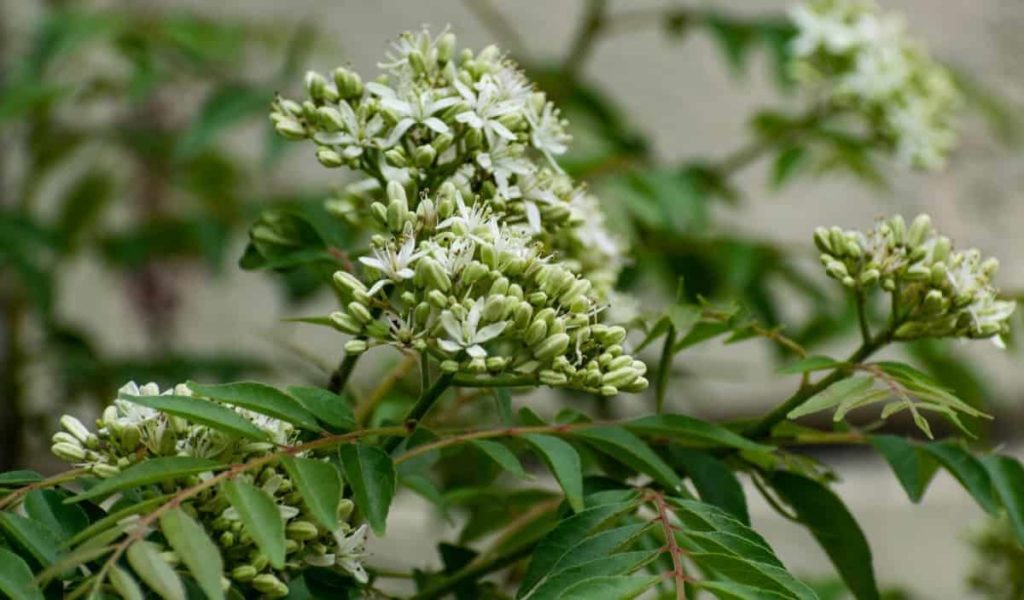
Leaf spot – A leaf spot is usually a sign of a pest attack. As the name suggests, it looks like spots on plant leaves, caused by bacteria or fungus, often carried by insects such as Aphids. These spots can grow together and cause the leaves to die off. First, you can spray plants with a combination of 1:10 baking soda and water. You can also apply neem oil. Then, apply fungicides on the first sign of the disease. It will not cure it, but it will prevent seeds from growing.
Powdery mildew – Powdery mildew is a fungal disease that mainly affects the plant’s leaves, which produces white spots with a powdery form. Use fungicides to try to rid your plant of fungus. If it is not practical, you may have to destroy the plant as the disease can quickly spread to other plants and is likely to kill the host plant.
When and how to harvest Curry leaves
Harvesting Curry leaves easy and improves the future growth of the plant. Once it is grown, you can pluck off the leaves. The crop will start growing gradually every year for one to four years. Standard varieties should be about six feet long in two years, and you can start regularly harvesting at this time.
It takes a little more time for dwarf and small species to reach harvestable sizes of about half their mature height, which takes small plants up to five years. The harvest can be done in two ways: you can break the leaves as you need them. Or you can have a big crop two or three times a year.
Frequently asked questions about growing Curry leaves from seed (FAQ)
How do you grow Curry leaves from dry seeds?
Curry leaves from dry seeds are pretty challenging to grow when growing. Instead, soak the seeds and grow them in the greenhouse. This process consists of preparation, seed germination, proper soil, watering, fertilizing, and winter dormancy. If you take care of all these things, it is more likely that your seed will germinate and grow in a plant.
In case you missed it: Growing Organic Curry Leaves (Kadi Patta) – At Home
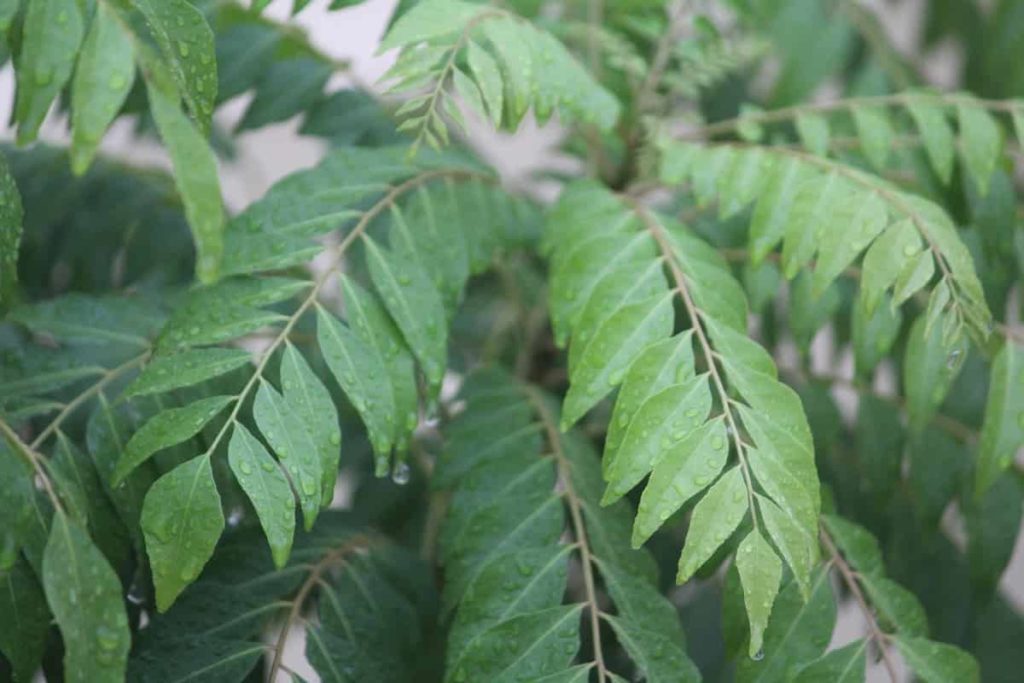
How long does it take for the Curry leaf plant to grow?
Once established, there is not much need on the way to the maintenance of the Curry leaf plant. On the other hand, young plants need about two years to be fully established.
Why is my Curry leaf plant not growing?
The Curry leaf plant is not growing because of its winter dormancy (the plant is preparing for winter), lack of sunlight, or low temperatures. Other factors will be poor soil and too much or little water for plants.
- How to Grow Tomatoes Organically at Home: A Comprehensive Guide
- Organic Gardening on a Budget: Low-Cost Methods and Materials
- Gongura Seed Germination and Planting Methods
- Cabbage Seed Germination and Selection
- Broccoli Seed Germination and Selection
- Asparagus Seed Germination and Variety Selection
- Seasonal Flower Gardening: Best Practices for Spring, Summer, Fall, and Winter
- How to Grow Hibiscus from Flower
- Plantation Ideas for Home Decoration: A Beginners Guide
- Flower Garden Designs and Layouts for Beginners
- Planting and Spacing Techniques in Papaya: A Beginner’s Guide
- Growing Gold: Essential Techniques for Planting Pineapples
- How to Make Kalanchoe Plant Bushy: Home Remedies and Solutions
- 11 Reasons Why Your Gardenia is Not Blooming: Home Remedies and Solutions
- Eco Elegance: The Guide to Designing a Drought-Tolerant Landscape
- Gardening on a Slope: Strategies for Hillside Landscaping
- Nourish and Flourish: Top Organic Mulches for Thriving House Plants
- Everything You Want to Know about Indian Mogra Flower: Discover Uses and Growing
- Green Thumb Success: Expert Tips for Cultivating Greenhouse Pumpkins All Year Round
- Maximize Growth & Flavor: The Ultimate Guide to Companion Planting in Herb Gardens
- How to Control Rhododendron Problems Naturally: Home Remedies and Organic Ways to Fix Them
- Natural Magic: The Remarkable Benefits of Cinnamon for Plants
- Best Steps to Revive Dying Tulip with Natural and Organic Treatment
- 10 Reasons Why Your Angel Trumpet is Not Blooming: Remedies and Treatment
- How to Fix Periwinkle Leaf and Flower-Related Problems: Natural Remedies and Solutions
- How to Fix Zinnias Leaf and Flower Problems: Discover Natural and Home Remedies
- Organic Steps to Induce Lemon Tree Flowers: A Comprehensive Guide
- Bloom Booster: Crafting the Perfect Homemade Bougainvillea Fertilizer
- Optimizing Growth: A Guide to Applying NPK Fertilizer for Potted Plants
- 10 Best Homemade Fertilizers for Rubber Plant: DIY Recipes and Application Method
- How to Boost Female Pumpkin Flowers: Effective Steps for More Flowers and High Yields
- Transform Your Indoor Garden: Top Benefits of Pink Salt for Houseplants
- 10 Best Homemade Fertilizers for Peacock Plants (Calathea): Easy DIY Guide
- Unlock Blooms: 9 Reasons Why Your Potted Chrysanthemum is Not Blooming
- 8 Reasons Why Your Potted Hibiscus is Not Blooming: Fix it with Simple Solutions
- Unlock Blooms: 9 Key Reasons Your Potted Frangipani Won’t Flower